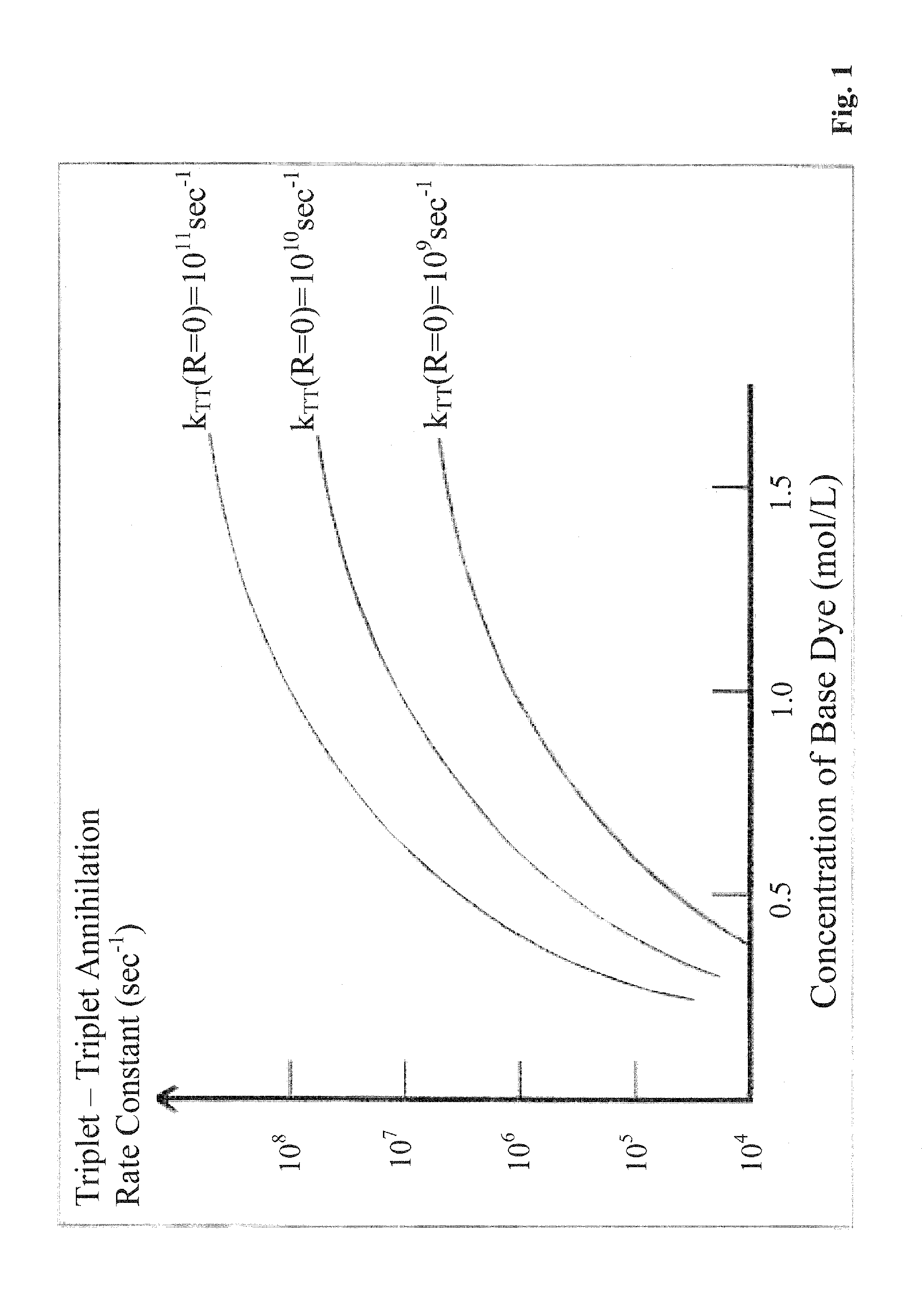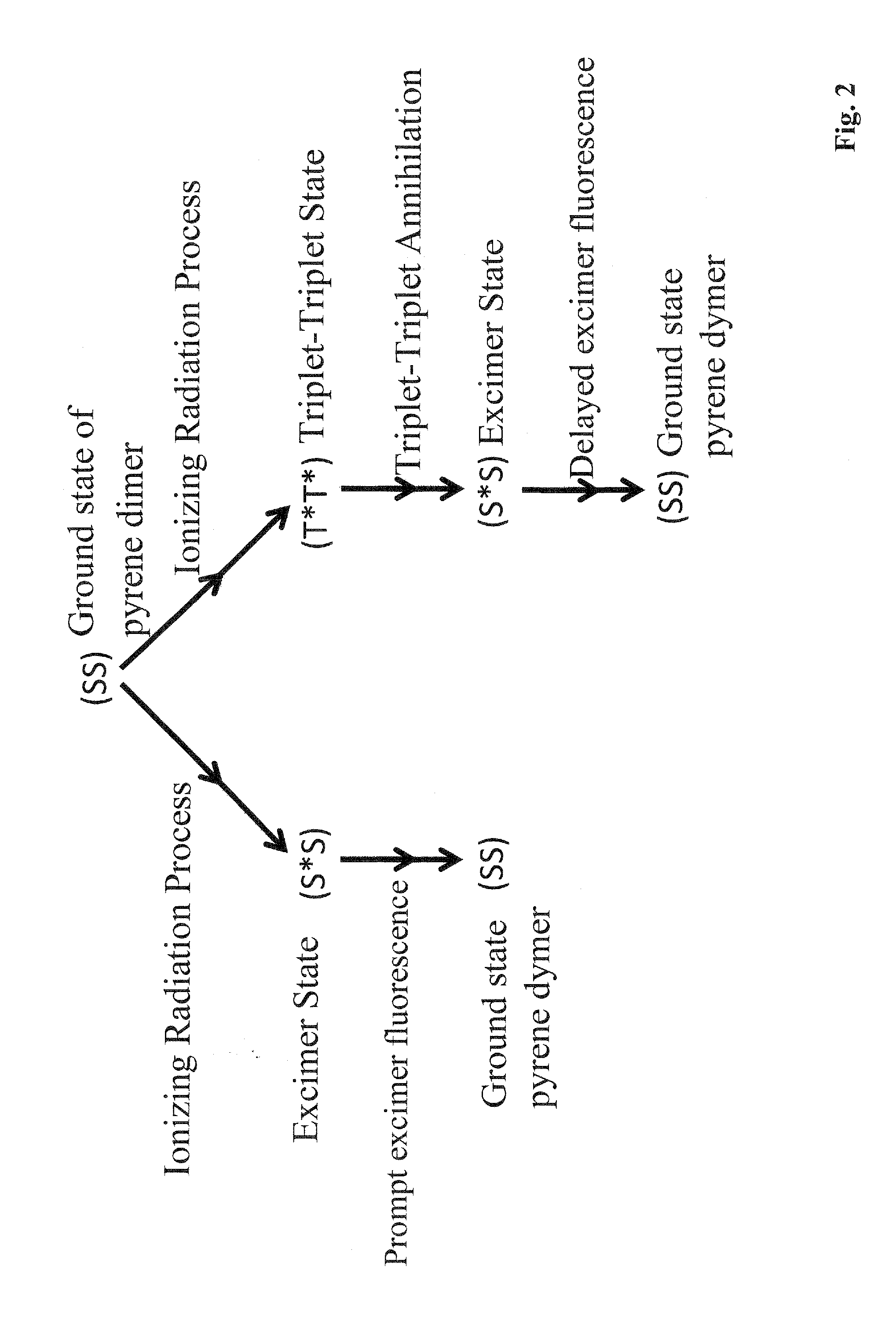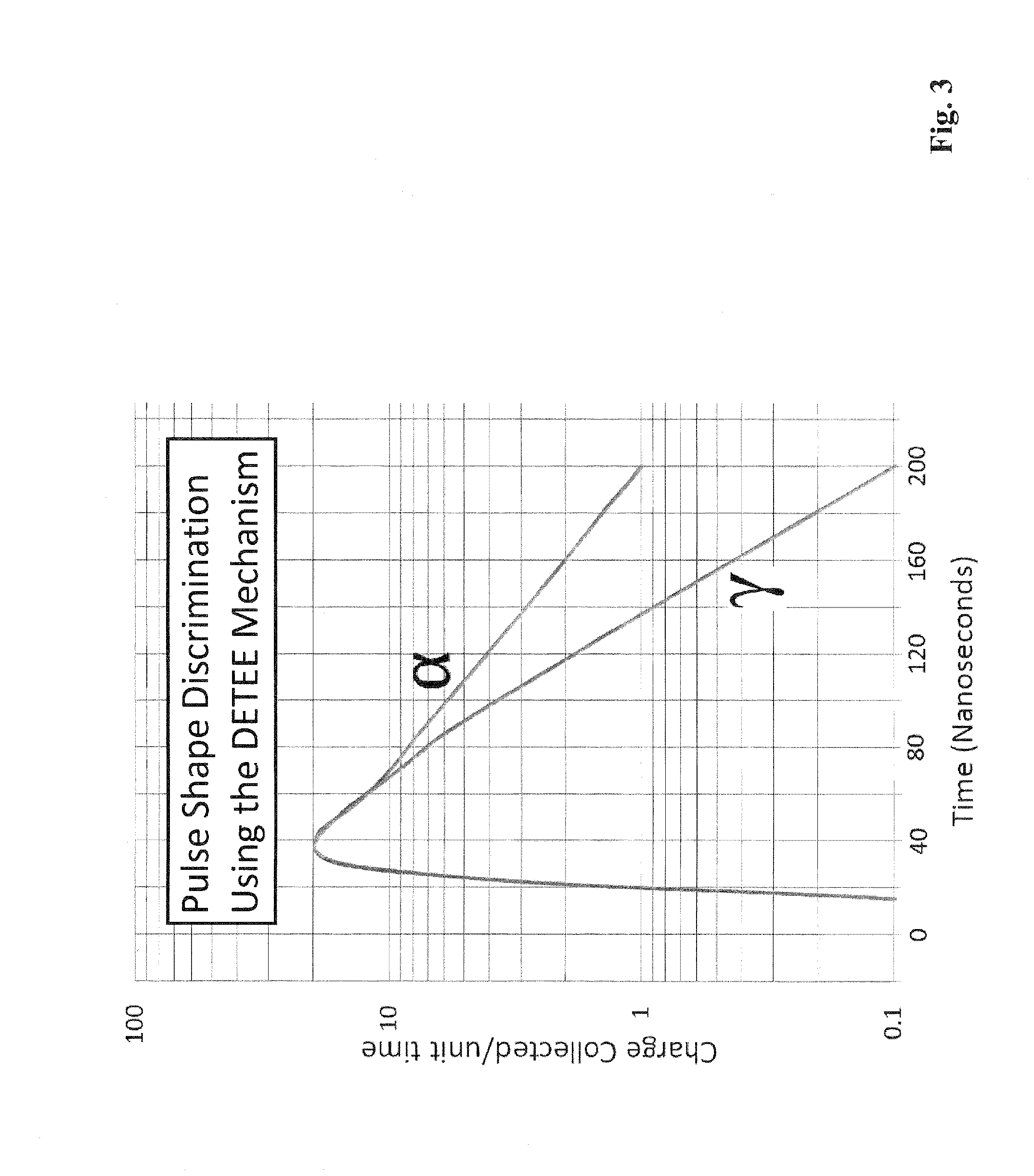Materials, method, and apparatus for detecting neutrons and ionizing radiation
a neutron and ionizing radiation technology, applied in the field of polymer scintillator materials, can solve the problems of inability to detect fast neutrons, poor timing resolution, mechanical vibration and shock sensitivity, etc., and achieve the effects of increasing prompt scintillation light output, high solubility of dyes, and high radiation resistan
- Summary
- Abstract
- Description
- Claims
- Application Information
AI Technical Summary
Benefits of technology
Problems solved by technology
Method used
Image
Examples
Embodiment Construction
[0038]Embodiments of the invention provide a scintillator material, a scintillator system, and / or a method of detecting incident radiation using a scintillator material, or scintillator system, comprising a polymer material that comprises chromophores. Additional embodiments provide a scintillator material, scintillator system, and / or a method of detecting incident radiation using a scintillator material, or scintillator system, comprising a polymer material having one, two, three, or more, organic dyes dissolved therein wherein the polymer material having the one, two, three, or more dyes dissolved therein comprises chromophores. At least one of the dyes, termed the base dye, has a concentration in the range 0.5 to 3.5 mol / L. In a specific embodiment, the base dye has a concentration in the range 1.0 to 3.0 mol / L. This base dye concentration is high enough to achieve a substantial triplet-triplet state annihilation rate despite the negligible diffusion of the dye in the rigid polym...
PUM
 Login to View More
Login to View More Abstract
Description
Claims
Application Information
 Login to View More
Login to View More - R&D
- Intellectual Property
- Life Sciences
- Materials
- Tech Scout
- Unparalleled Data Quality
- Higher Quality Content
- 60% Fewer Hallucinations
Browse by: Latest US Patents, China's latest patents, Technical Efficacy Thesaurus, Application Domain, Technology Topic, Popular Technical Reports.
© 2025 PatSnap. All rights reserved.Legal|Privacy policy|Modern Slavery Act Transparency Statement|Sitemap|About US| Contact US: help@patsnap.com



